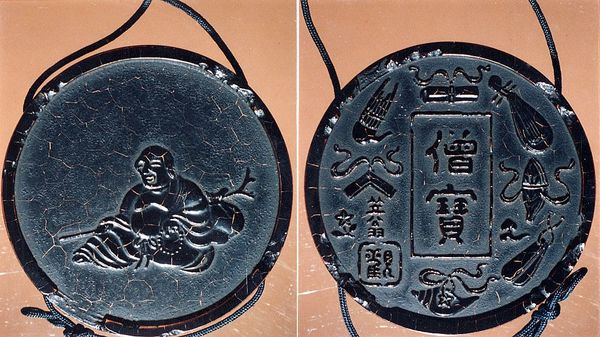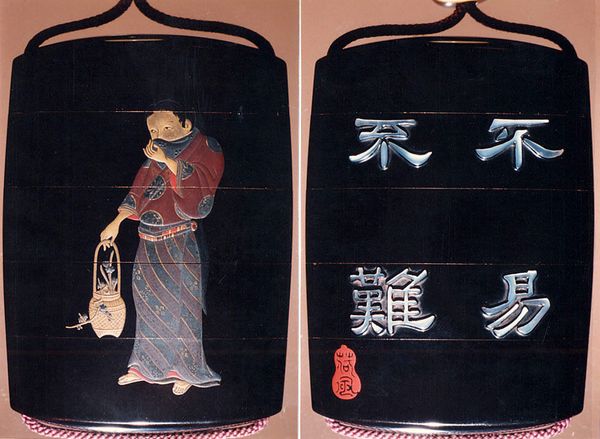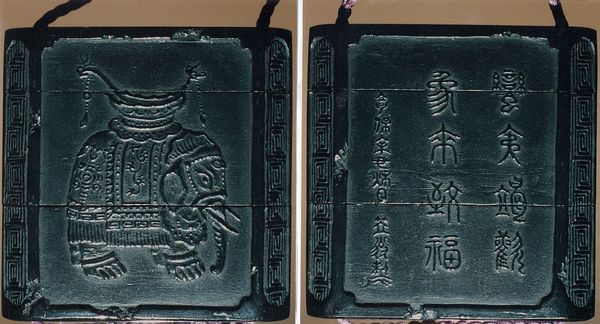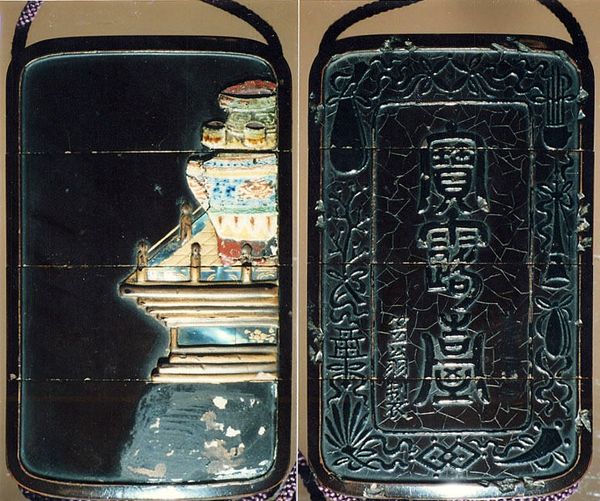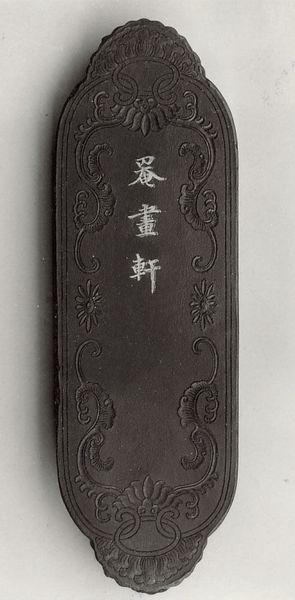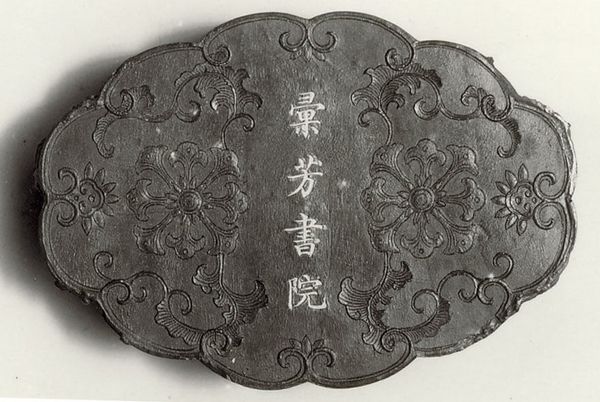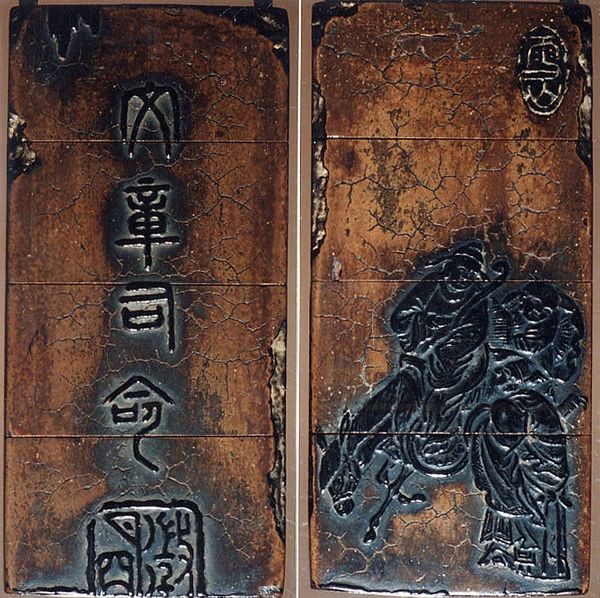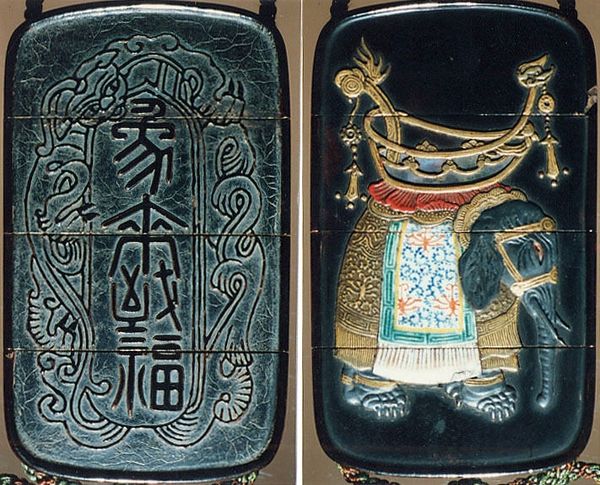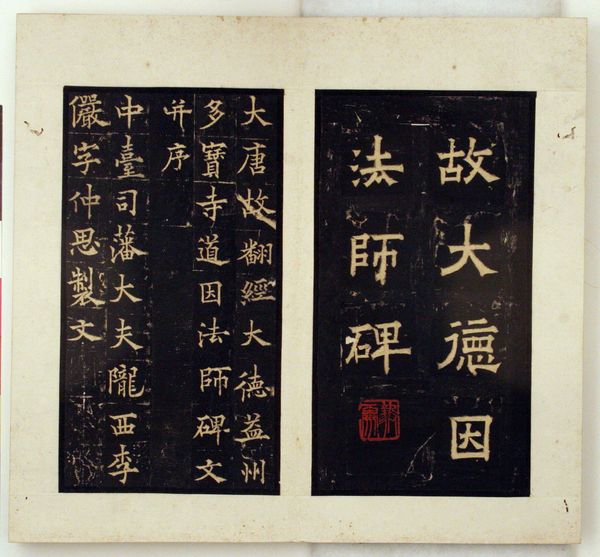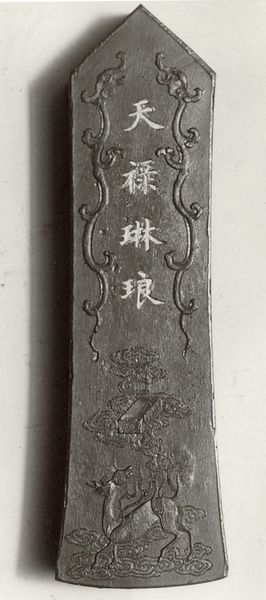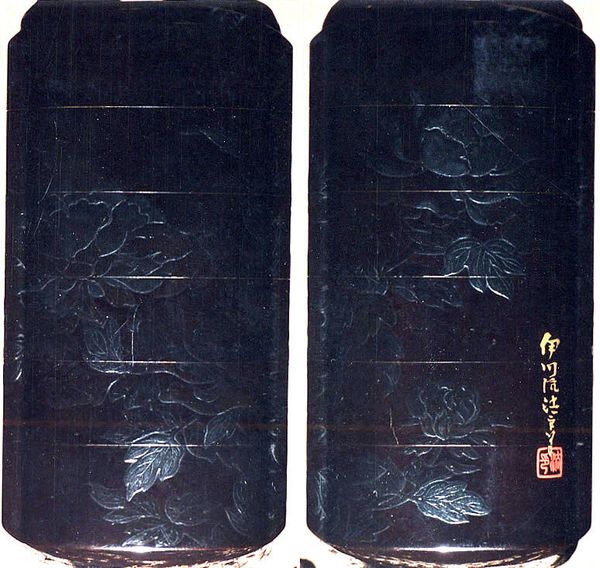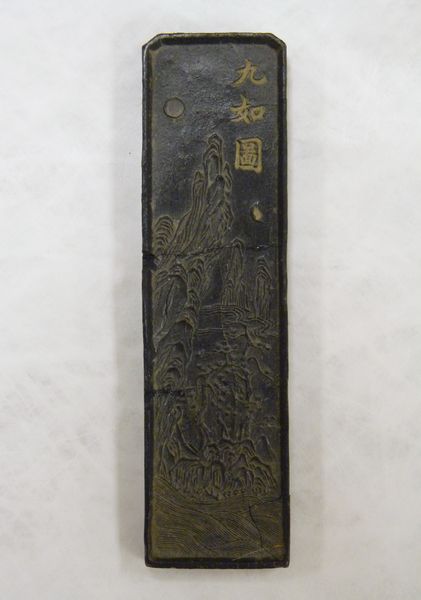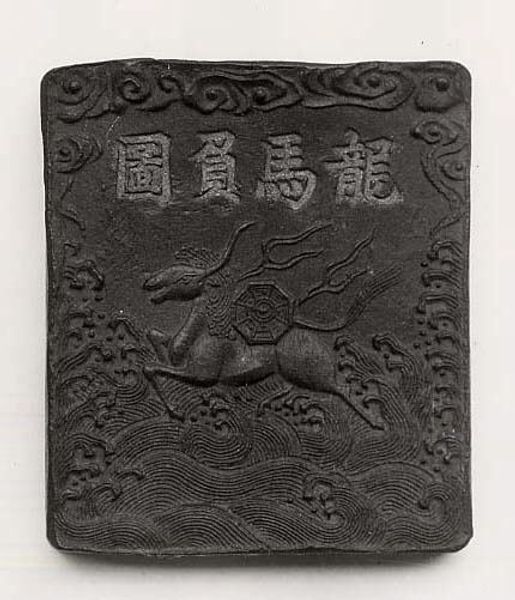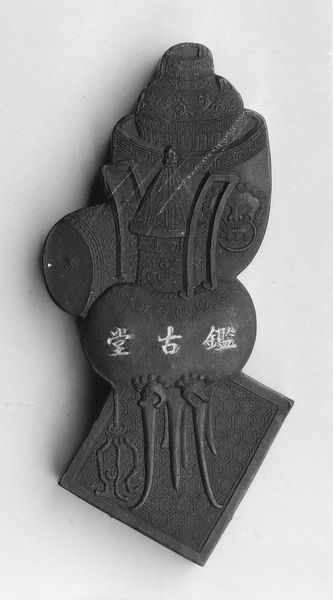
Case (Inrō) in the Shape of an Ink Stick with Design of God of Longevity (Jurōjin), Reading beneath a Star Constellation (obverse);Twelve-Character Inscription (reverse) 19th century
0:00
0:00
#
human-figures
#
asian-art
#
jewelry design
#
collage layering style
#
fashion and textile design
#
japan
#
hand-embroidered
#
wearable design
#
clothing theme
#
human
#
24_meiji-period-1868-1912
#
imprinted textile
#
layered pattern
#
printed materiality
#
decorative art
Dimensions: 2 5/16 x 1 1/2 x 11/16 in. (5.9 x 3.8 x 1.7 cm)
Copyright: Public Domain
Editor: This striking object is a 19th-century Inro by Shibata Zeshin, "Case (Inro) in the Shape of an Ink Stick with Design of God of Longevity (Jurōjin), Reading beneath a Star Constellation". The details seem to be crafted from such fascinating materials! How do we interpret its significance beyond its apparent form? Curator: The materiality speaks volumes. Here we have an object mimicking another – an inro shaped like an ink stick, disrupting conventional distinctions between art, craft, and everyday utility. Consider the labor involved in its construction, the artisanal skills required to manipulate the materials. The "high art" of painting is referenced through the depiction of Jurōjin and calligraphy, yet it is inextricably linked to the object's function. Editor: So, you are pointing towards the process and societal function affecting its artistry. It really prompts us to rethink about separating the traditional concept of "art". The work evokes this question around production and functionality so interestingly. Curator: Precisely. This piece engages in a dialogue about art as not just a product of individual genius, but of material conditions, skill sharing, and its place within systems of production and use. This also extends to considering it being ‘wearable design’ which expands art from being separate of function. Think about how consumption of such object may imply social and economic status during that period. The way the craquelure or crackling on the surface creates visual depth—does that remind you of anything else? Editor: I suppose, the texture gives off some effects of something aged or naturally weathered, but on purpose! Do you think the aging also plays with our consumption value? Curator: Potentially. The aging and use as adornment invites speculation around labor, status, and the intertwined aesthetics and economics in Meiji-era Japan. We can understand it better when we focus our observation on the piece's intended societal placement. Editor: Right, so analyzing the object based on production processes and social contexts unveils broader artistic commentary. I will never be able to see wearable arts the same again! Curator: And hopefully, you will also remember to see art making through social factors and materials too.
Comments
No comments
Be the first to comment and join the conversation on the ultimate creative platform.
